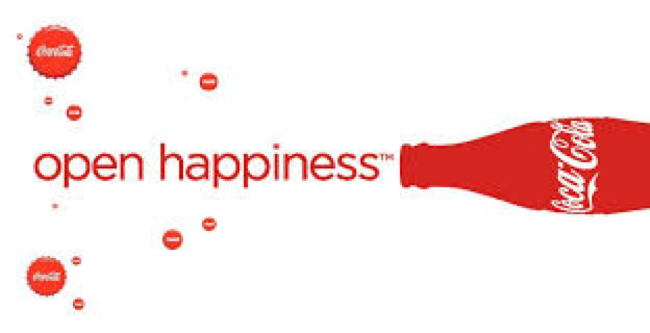In this post, we set out to give you a clear definition of cognitive biases, why they are important and how to use them. Why are they so essential, you ask? Well, because human psychology is a complex, deep subject that still largely remains a mystery – even with today’s scientific efforts. Although most people picture themselves as rational beings, the truth is otherwise: most people do not act rationally.

Why?
Because human behavior also relies on emotions, feelings, social interactions, and basic instincts to survive, live, and thrive.
Over the course of our lives, we accumulate knowledge, memories, and experiences that help us process information and formulate judgments and decisions. Obviously, our behavior changes as we grow older and evolve in our society – it’s a never-ending story.
We are much more intricate than computers and machines. And that’s OK.
It is human nature to be deeply social: we tend to live with, by and for other people. This is why we tend to have cognitive biases in our decision-making processes.
In this article, you’ll learn that most cognitive biases are either based on perception or cognition – our abilities to experience things and process information.
First things first, let’s start with a quick definition:
What are Cognitive Biases?
Definition: Cognitive biases are psychological deviations from rationality caused by distortions formulated by our brain when it comes to judgment, perception, memory and decision-making processes.
Although their classification remains subject to controversies and discussions, here’s how Wikipedia classifies them:
- Decision-making, belief and behavioral biases
- Social biases
- Memory biases
To learn more: How the Unconscious Motivates Online Conversions.
Without further ado, let’s talk about how cognitive biases are used in marketing to increase sales and profits.
The Illusion of Truth Effect
What is it?
The illusory truth effect is the tendency to hold statements and information as true after repeated exposure.

Regardless of the validity of that statement, people are more likely to agree with it after seeing it or hearing it multiple times.
Because repetition creates a sense of familiarity, people tend to believe familiar statements – those that they perceive and hear frequently.
How is it applied to marketing?
The illusory truth effect is applicable to many fields such as politics, marketing, and advertising.
Companies use the illusion-of-truth bias to their advantage by crafting simple, easy-to-process messages and repeat them over and over.

In order to apply this cognitive bias to real-life scenarios, marketers use various techniques such as slogans, repeated ads and retargeting to create a “loop-effect” in their customers’ mind.
With familiarity comes trust – a repeated marketing message slowly becomes a truth or a universally-recognized statement.
The In-Group Bias
What is it?
The in-group bias (or favoritism) describes the tendency to favor members of one’s group over outsiders.
Deeply rooted in social psychology, this cognitive bias pushes members of a group into giving preferential treatments to others perceived as members of that same group.
Consequently, in-group members can develop behavioral traits that can impact resource allocation, communication, and perception.

How is it applied to marketing?
Belonging to a social group is a social need that answers two main human concerns: our self-esteem and the perception of our social identity.
When used for marketing applications, the in-group bias can be a powerful tool to increase sales, profits, brand awareness, and brand loyalty.

Creating a feeling of belonging to a community is a massively powerful tool for companies that can apply to both B2B and B2C companies.
When done properly, members of your community become more prone to:
- Spend more and less consciously – Research has shown that the in-group bias influences resource allocation: people feel better about spending their money on products and services that connect them with other people. They’re also less hesitant about spending for those.
- Tell others about your business/product/services – It’s no breaking news – people tend to brag about their positive experiences and group experiences usually bring positive feelings.
See Fortnite’s example of the ingroup bias.
There are various video games that have heavily relied on the in-group bias to increase average-spending-per-user and overall sales.

Epic Games’ Fortnite has achieved an incredible average of $58 spent per user, racking up almost $300M in a single month in April 2018.
Their secret?
A huge community backed up by a tremendous number of YouTube and Twitch streamers that fueled a real passion for the game. This has brought many players to join the game and spend real dollars on in-game purchases that anyone can see, namely the Fortnite community.
The Authority Bias
What is it?
The authority bias – made famous by Stanley Milgram’s 1961 experiment – states that people tend to attribute a greater accuracy to the opinion of an authoritative figure.
Besides, the authority bias has also shown that people tend to be more influenced by information coming from an authority figure, regardless of the actual content of that information.
How is it applied to marketing?
Although politicians also use this bias, marketers use the authority bias as a weapon to convince potential customers.
The most common example of the authority bias can be found in advertising: how many times have you seen a doctor or a dentist trying to convince you that this is the right product for your health?

You guessed it, authority bias strikes again.
This technique is omnipresent in ads and marketing campaigns – think about the numerous “experts” or “celebrities” used in advertising.

If you’re in a B2B business, remember that authority can take many forms: you can target authoritative publications or use case-studies from renowned companies to enhance your brand perception.
The Anchoring Bias
What is it?
The anchoring bias influences decision-making processes and is well-known for its repercussion in price negotiations.
It’s a tendency for individuals to favor the first piece of information received when making decisions – also known as the anchor – over any subsequent information.

An anchor is basically a starting point from which all further discussions, judgments, and negotiations will be formulated. It can be a range, a price, or any type of information. Prices, however, are the most commonly cited example for this bias.
How is it applied to marketing?
When establishing prices or working on new offers and designs, smart marketers can use the anchoring bias to determine whether or not their ideas align with the customers’ expectations.
This technique can yield great results because the vast majority of consumers are exposed to lots of advertisements and “anchors”. It could be time to create your own proper anchor.
Xiaomi’s example of the anchoring bias
In late 2018, Xiaomi came up with the Pocophone F1: a near-flagship, affordable smartphone that redefined price benchmarks for a whole market.

When it came out, reviews and tech-savvy influencers echoed Xiaomi’s new smartphone as the “bargain of the year”. It also became the “new benchmark” for other manufacturers.

Thanks to the Pocophone F1, Xiaomi used the anchoring bias to set a new “anchor” for the mid-tier smartphone market: customers now expect near-flagship specs at an affordable price, even from other manufacturers.
The Hyperbolic Discounting Bias (or Present-Bias)
What is it?
The hyperbolic discounting bias – also known as the present or current moment bias – is a cognitive bias that makes people favor immediate payoffs compared to later payoffs.
When exposed to two positive outcomes, humans develop short-term preferences and are very likely to choose the one that will happen the sooner.
As a consequence, humans tend to make inconsistent choices that their future selves would regret as they have current moment bias at the time of the decision-making process.
How is it applied in marketing?
Marketers have long used the current moment bias to play on the consumers’ wants and desires.
Because we favor the present, smart marketers can promote immediate pleasures and instant gratification so that we buy now.
For instance, borrowing on credit cards is a common consequence of the hyperbolic discounting bias: many people would rather indebt themselves to buy a television now (and pay interests) than wait until they have sufficient funds.

In order to use the present moment bias effectively, marketers emphasize two main characteristics:
- The tangible benefits (what’s in for me now?)
- The ease of use (how easy is it and how fast is it?)

BuildFire is an online tool that lets you develop your own mobile application without the usually required hassle: there’s no coding required nor hiring developers.
The entire copy of the website centers around the hyperbolic discounting bias: you can have your app now, without spending too much and without waiting for too long.

Throughout their website, BuildFire’s goal is to demonstrate instant gains and massive savings in order to have you act now.
The Observer-Expectancy Effect
What is it?
The observer-expectancy effect is a cognitive bias defined by the tendency of a researcher to subconsciously influence an experiment because of his own cognitive biases.
The expectancy effect is linked to the confirmation bias – i.e the tendency to seek out and favor information that already falls in line with our beliefs – it causes marketers and researchers to create biases in their own experiments.
How is it applied in marketing?
Marketing (and for that matter, digital marketing) requires research and experiments in order to achieve greater sales and increase conversions.
As marketers, we develop assumptions and hypotheses based on our knowledge and past experiences.
However, many marketers don’t realize that their own assumptions can skew or distort their experiments. We often try to prove a certain point and influence our tests in the process.
By doing so, marketers often run inherently biased experiments: they’re trying to prove themselves right rather than run an actual experiment.
This is where A/B testing comes in.
Using A/B testing properly, marketers can run statistically relevant experiments using randomized samples and fair traffic attribution. Simply put, A/B testing can be a powerful tool to use the observer-expectancy at your advantage. You can statistically prove your assumptions and drastically increase sales – or be proven wrong and move on to your next assumption.
One A/B testing example

Look at the above graph.
At first, one could think that the variation (=the blue line) would have outperformed the control version (=the green line). As days went by, it appeared that the variation and the control version actually performed the same. Without this 18 days A/B test, one marketer could have easily mistaken the first results for an impressive surge in conversions, although the test has proven him wrong in the long run.
That’s it for our first take on cognitive biases applied to marketing.
Did you like this article? Feel free to share and check out our other in-depth articles on website optimization.




